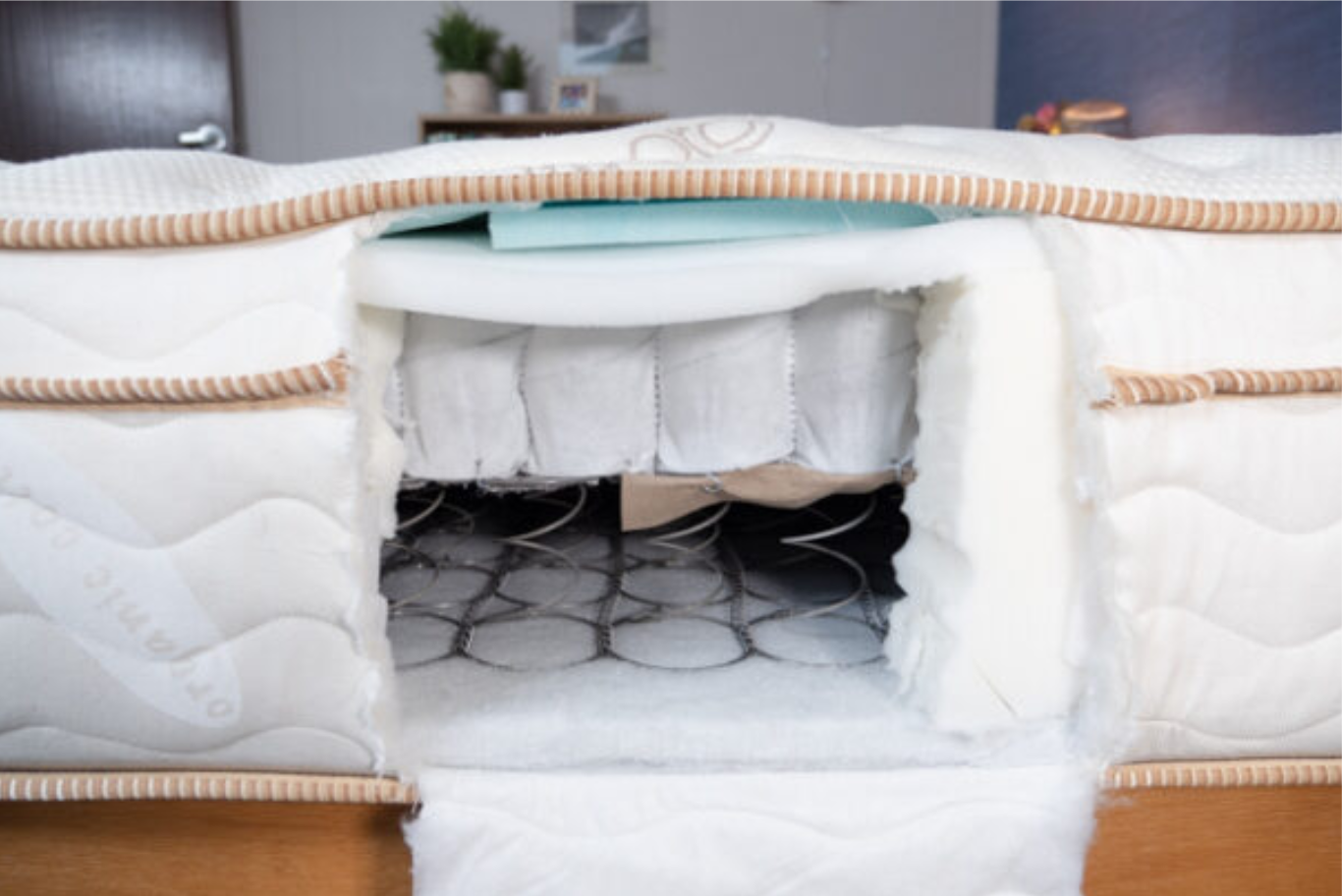All about Innerspring Mattresses: Tips, Tricks, and Must-Knows


You’ve tossed, turned, and counted countless sheep, yet sleep still eludes you. If you’re contemplating a mattress upgrade but feel overwhelmed by the myriad options available, don’t worry. Today, we're diving into the classic innerspring mattress—a time-tested favorite that combines comfort and value.
What Is an Innerspring Mattress?
Definition and History
An innerspring mattress relies on a system of metal coils to provide support and comfort. These coils, typically made of steel, are arranged in various configurations. Despite their long history, dating back to a patent in 1865, innerspring mattresses have evolved significantly. Innovations like advanced coil designs and added comfort layers have improved their durability and comfort.
How It Works
Innerspring mattresses offer support through metal coils that compress under weight and push back to provide a supportive surface. They’re often topped with layers of padding like foam or fiberfill for extra comfort. The firmness and feel of an innerspring mattress vary based on the coil type, count, and comfort layers used. More coils and thicker comfort layers usually mean a softer, plusher mattress, while fewer coils and thinner layers result in a firmer feel.
Anatomy of an Innerspring Mattress
Coil System: This is the core support structure of the mattress. Coil systems come in various types and shapes, each impacting support and comfort differently.
Comfort Layers: These layers sit on top of the coils and offer additional cushioning. Materials can include foam, fiberfill, or wool.
Upholstery Layers: These are the outer layers that cover the comfort layers. They might include fabrics like cotton, polyester, or silk.
Border and Edge Support: This component helps maintain the mattress shape and prevents sagging, often involving reinforced edges or extra padding.
Types of Innerspring Mattresses
Bonnell Coils: Hourglass-shaped and connected by helical wires, Bonnell coils are durable and affordable but may transfer more motion.
Continuous Coils: Made from a single wire into S-shaped coils, these provide consistent support and are somewhat responsive to body movements.
Offset Coils: Similar to Bonnell but with flattened tops and bottoms, offset coils offer better contouring and support, which can be ideal for firmer preferences.
Pocketed Coils: Individually wrapped in fabric, pocketed coils move independently, reducing motion transfer and providing focused support—great for couples.
Choosing the Right Innerspring Mattress
Firmness Level: The firmness of a mattress affects comfort and support. Find a balance that suits your needs—too firm or too soft can both lead to discomfort.
Coil Count: More coils generally mean better support, but consider the coil thickness and quality as well.
Comfort Layers: The type and thickness of these layers influence the mattress’s overall comfort.
Support and Alignment: A good mattress should support proper spine alignment to avoid pain and discomfort.
Durability: Look for high-quality materials and a robust warranty to ensure longevity.
Benefits and Drawbacks of Innerspring Mattresses
Benefits:
- Affordability: Often less expensive than other types.
- Breathability: Good airflow helps keep you cool.
- Wide Availability: Easy to find in various designs and price ranges.
Drawbacks:
- Motion Transfer: Movement on one side can be felt on the other.
- Noise: Coils may produce noise, which can be disruptive.
- Less Contouring: May not provide the same level of body contouring as memory foam or latex.
Tips for Mattress Care
- Regular Rotation and Flipping: Rotate the mattress 180 degrees every three months and flip it once or twice a year to prevent sagging.
- Proper Support: Ensure the mattress is on a stable, flat surface to avoid premature wear.
- Cleaning and Maintenance: Use a mattress protector, vacuum regularly, and spot-clean stains. Air out the mattress periodically.
